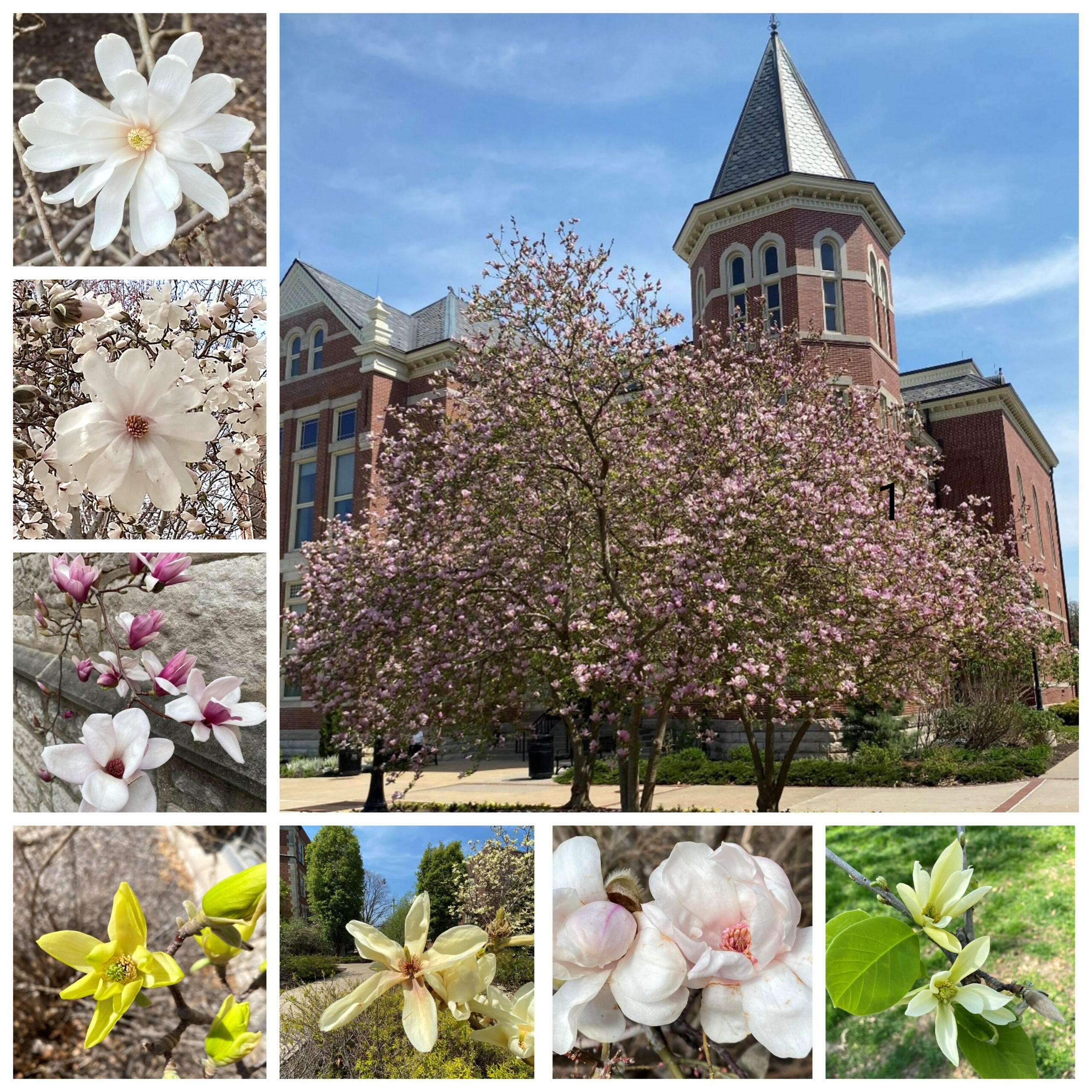Magnolia flowers tantalize your senses

COLUMBIA, Mo. – Several species of ornamental magnolias grace the Missouri landscape with colorful flowers from March through mid-June.
In a press release, University of Missouri Extension horticulturist Michele Warmond said, “In addition to showy, prolific blooms, magnolias’ sweet, citrusy floral fragrance permeates the air and beguiles the senses.”
Magnolia flowers have a fascinating history, says Warmund. They evolved to attract flightless beetles for pollination millions of years before other common insects, such as bees, butterflies and moths even existed. Their leathery leaves and thick carpels (structures that bear ovules) work to thwart chewing insects. The tough carpels also prolong the time that beetles must spend on flower parts, promoting pollination.
Many magnolias in Missouri are grown as large shrubs or pruned to a single trunk to develop a small tree. Most species tolerate clay soil and grow best in full sun to partial shade. Freezing temperatures can damage the early spring blooms of deciduous magnolias.
To delay blooming and encourage flowering, avoid sites with southern exposure. If needed, prune deciduous magnolias after flowering. Water during periods of drought. Serious insect pests and diseases on magnolias are uncommon.
Varieties of magnolias include:
- Star magnolia (Magnolia stellata) is the first species to bloom in Missouri. Usually grown as a large shrub, it reaches 15-20 feet at maturity. Its fragrant flowers with white, strap-like tepals appear in March to early April. To prolong blooming and minimize tepal browning, plant star magnolias in a site protected from high winds.
- Lobner magnolia (Magnolia × loebneri) is a hybrid that grows to 10-20 feet at maturity. Cultivars of this hybrid develop perfumy flowers with 10-15 tepals that vary from white, blush pink to purplish pink. They usually bloom in mid-March in central Missouri.
- The Little Girl series of slow-growing, deciduous plants reach 20-25 feet at maturity. The cultivars “Ann,” “Betty,” “Jane” and “Judy” have flowers with light to dark pink tepals. These cultivars generally bloom one to two weeks later than star magnolia cultivars and are less likely to be nipped by spring frosts.
- “Butterflies” magnolia is a cultivar of the deciduous hybrid M. acuminata × M. denudata. When trained to a pyramidal tree form, it can reach 18-20 feet at maturity. A showy display of bright yellow flowers usually appears about one to two weeks later than most star magnolia blossoms.
- • “Ivory Chalice” is another M. acuminata × M. denudata cultivar. However, this cultivar develops large (6-inch diameter) creamy white flowers that bloom about two weeks later than “Butterflies” magnolia flowers in central Missouri.
- Saucer magnolia (Magnolia × soulangeana) is a widely grown species that blooms a bit later and grows taller (20 to 25 feet) than star magnolia. There are several cultivars of saucer magnolia with cup-shaped flowers of white, pink, magenta and burgundy. The first bloom is the most spectacular, says Warmund. After this, a few flowers continue to appear on new growth but are less striking.
- Cucumber tree (Magnolia acuminata), the only magnolia native to Missouri, grows in southeastern counties near the Mississippi River. It is a large deciduous tree that typically grows to 40-70 feet but can reach 100 feet. The greenish-white tepals of its flowers are considered less spectacular than those of other magnolias. This species may be better known for its green, cucumber-shaped, cone-like fruit that develops after flowering and its foliage, which turns golden in fall.
- Southern magnolia (Magnolia grandiflora) is a large broadleaf evergreen native to the southeastern United States. Leaves are dark glossy green on top and brownish on the underside. Fragrant white flowers begin to appear in central Missouri from May to June. Following bloom, cone-like fruit with beautiful red seeds develops on trees. Southern magnolia trees often suffer from winter injury in Missouri, displaying symptoms of foliar browning. However, the cultivar “Bracken’s Brown Beauty” is more reliably cold-hardy in central and southern regions of the state. The dense, fuzzy hairs on the underside of its foliage retard moisture loss, which results in leaf discoloration during the winter.
Miss Clipping Out Stories to Save for Later?
Click the Purchase Story button below to order a print of this story. We will print it for you on matte photo paper to keep forever.

